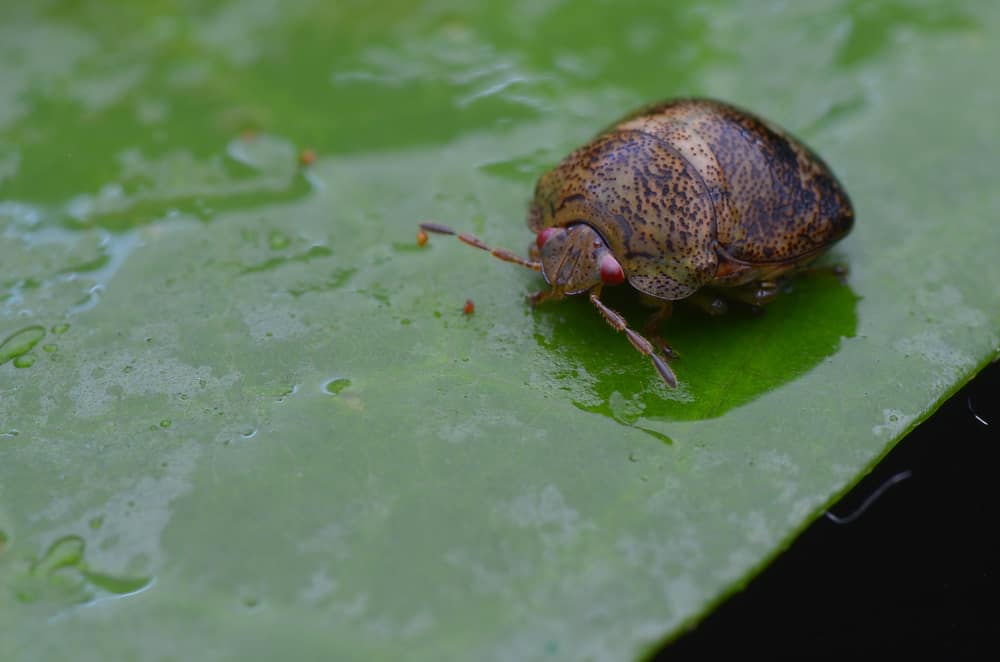Mississippi’s humid subtropical climate is perfect for many, including several species of insects. This means that anyone living in The Magnolia State, and even those passing through, should be prepared to handle a variety of pests.
While this is only the tip of the iceberg, some of the most common house bugs in Mississippi include:
- Termites
- Silverfish and earwigs
- Cockroaches
- Spiders
- Centipedes and millipedes
- Kudzu Bugs
- Webworms
- Bedbugs
While you may already be familiar with some on this list, others often crawl by unnoticed until they become an issue. Keep reading to learn more about the specific bugs you can expect and the threats they may pose (if any).
Common House Bugs in Mississippi
1. Termites

Credit: news-journal
There are three main species of termites you may come across in Mississippi:
- Eastern Subterranean Termites (Reticulitermes flavipes): the most common across the entire state; about ⅜ inches long and liely to swarm in spring (or late January in coastal areas)
- Formosan Termites (Coptotermes formosanus): non-native subterranean species known in 25 counties (mostly in the south); about ½ inches long and swarm later (April/May) usually in the darker hours; attracted to light, and likely to interrupt social events
- Southeastern Drywood Termites (Incisitermes snyderi): foundonly along the gulf coast, usually in dead trees, buildings, and outdoor furniture; nest directly in the wood without soil contact; appear similar to Formosan termites, but their head is the same color as their body with clear wings
Dealing with termites is no small feat. By the time you notice the swarms it usually means there’s already a heavy infestation, and you need a thorough plan of attack to prevent serious structural damage.
If you’re unsure what type of termite you’re dealing with, go ahead and catch a few, preserve them with ethyl alcohol, and send them to the MSU Insect Identification Lab for assistance.
While DIY termite treatments exist, it’s best to contact a termite control specialist. They will be able to identify the species you’re dealing with, assess the damage they’ve done, locate the entry point, and construct a plan to remove them without further compromising your structure.
2. Silverfish and Earwigs
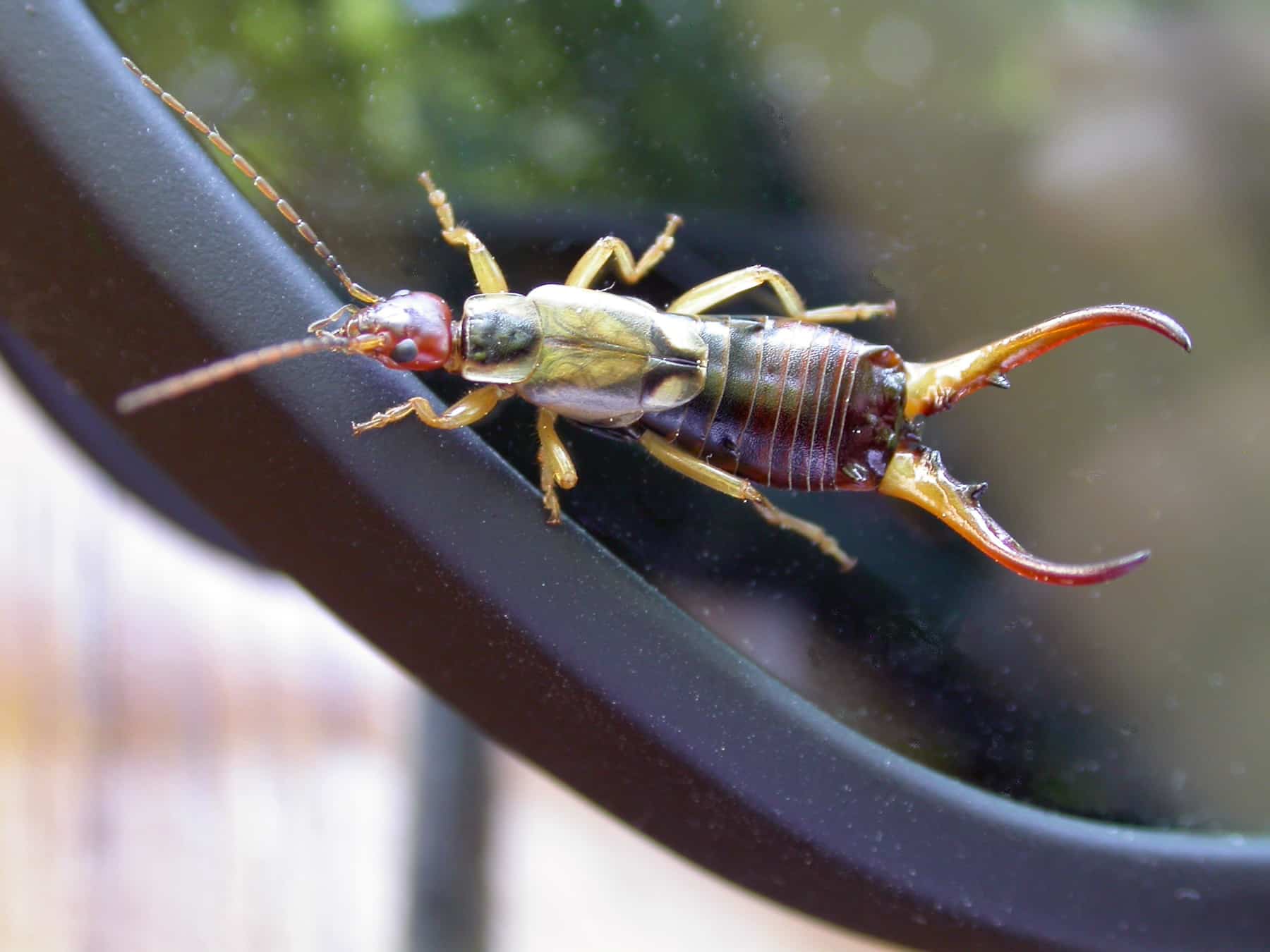
Credit: doorcountypulse
Silverfish and earwigs are two completely different insects, but they show up in the same MS areas and are often confused.
Silverfish are a pearly gray color with a flat body that narrows towards the tail. They’re longer, about ½ to 1 inches total, and have three appendages that look like antennae. They prefer starchy foods, and you can find them inside books and other paper products inside.
Earwigs are also flattish, but they’re usually brown or black and have wings. They’re about half the size of most Silverfish, although some can get as long as 1 ¼ inches, and have what looks like a pincer on their tail-end.
Earwigs are usually found outside in moist, dark areas, and they’re more likely to go after your houseplants than your books.
While they’re not terribly dangerous, you don’t want them taking up residence in your home. Most show up in isolated incidents, but a full infestation can be difficult to manage and a sign of a bigger problem.
3. Cockroaches
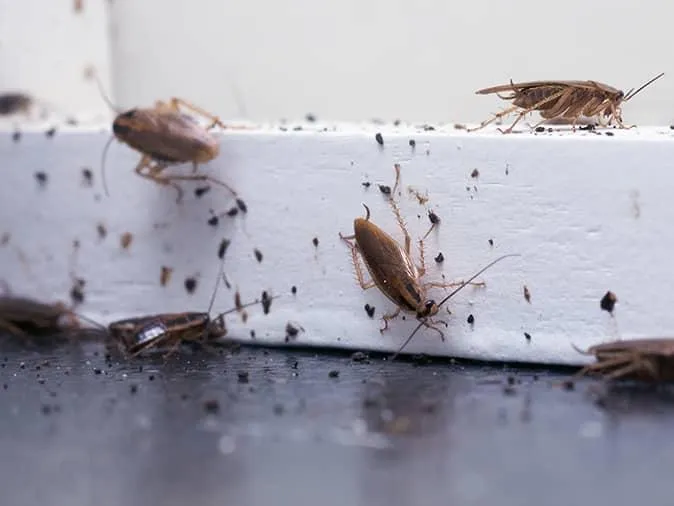
Credit: arrownj
Roaches love warm, moist areas, and Mississippi has plenty of those. Because of this, you may come across a variety of species, including:
- German Cockroaches (Blatella germanica)
- American Cockroaches (Periplaneta americana)
- Oriental Cockroaches (Blatta orientalis)
- Brown Banded Cockroaches (Supella longipalpa)
- Pennsylvania Wood Cockroaches (Parcoblatta pensylvanica)
- Australian Cockroaches (Periplaneta australasiae)
- Surinam Cockroaches (Pycnoscelus surinamensis)
- Smokey Brown Cockroaches (Periplaneta fuliginosa)
- Florida Woods Cockroaches (Eurycotis floridana)
You probably don’t need to know exactly what kind of cockroach you have to get the creepy crawlies, but identification can help you figure out what they’re after and how to get rid of them.
In most cases, you want to start with a bait trap that they can take back to the nest to interfere with the reproduction process. Use a contact killer after a few days, then make sure you seal up any points of entry and get rid of whatever is attracting them in.
Unfortunately, cockroaches are incredibly resistant and carry a variety of diseases. While the DIY plan is cheaper, it’s usually worth it to recruit professional help.
4. Spiders
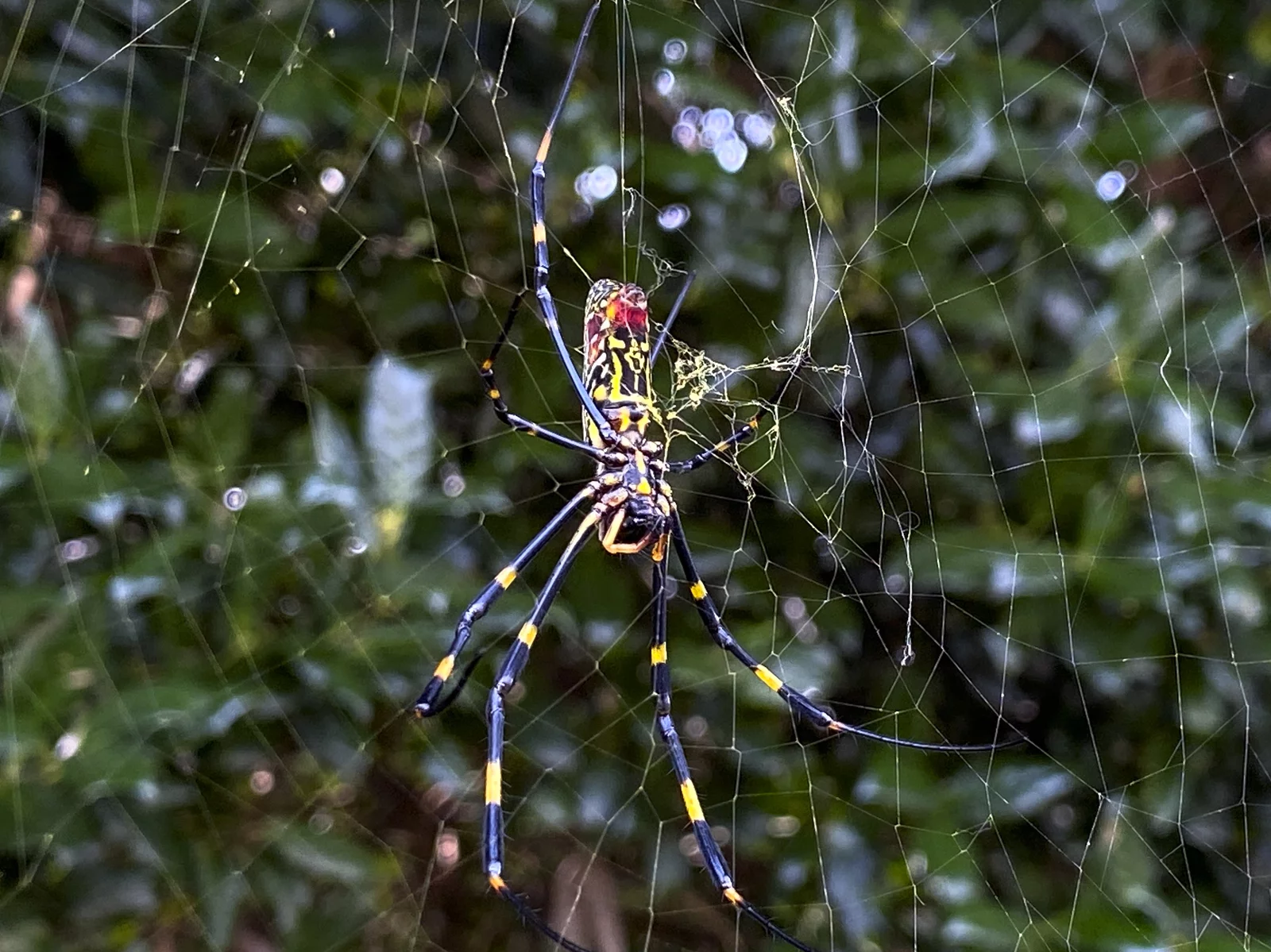
Credit: npr.org
Spiders are another creepy crawly creature with a long list of species crawling around Mississippi homes. Spider ID shows you 27 unique species, but the most common include:
- Brown Recluse Spiders (Loxosceles reclusa)
- Southern Black Widow Spiders (Latrodectus mactans)
- Carolina Wolf Spiders (Hogna carolinensis)
- Jumping Spiders (Salticidae)
- Orb Weavers (Zygiella)
- House Spiders (Parasteatoda)
- Puritan Pirate Spiders (Mimetus puritanus)
- American Nursery Web Spider (Pisaurina mira)
You can usually identify the spider you have based on its appearance as well as the type of web it makes. Sometimes, it takes a much closer eye to distinguish differences. For example, the American Nursery Web Spider is often mistaken for a Brown Recluse, but they don’t have the same hermit-like personality.
Most spiders in the home are harmless and keep to themselves, but you may want to eliminate or relocate venomous species.
5. Centipedes and Millipedes
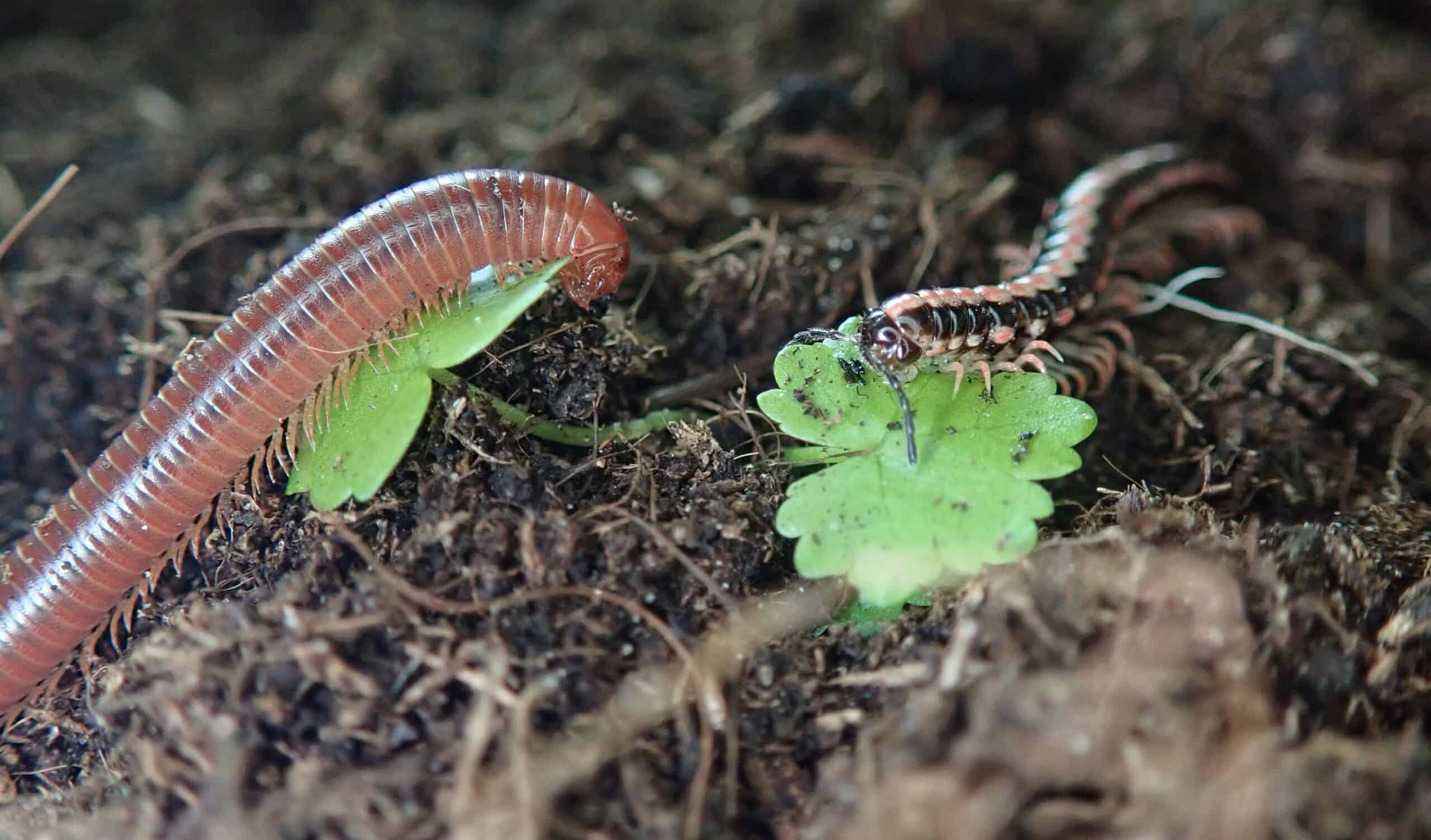
Credit: cpr.cuhk.edu.hk
Centipedes and millipedes are often confused because they’re both very long with plenty of legs to spare. They’re closer to marine creatures like lobsters, but they live on land and chow down on pests like silverfish, spiders, and cockroaches.
Some specific types you will find in Mississippi include:
- Georgia Flat-backed Millipedes (Cherokia georgiana): with yellow, orange, or red legs, dotted body segments, and very long antennae
- Greenhouse Millipedes (Oxidus gracilis): from Japan; about 1 inch long with bumpy bodies, white legs, and no eyes; can retain air and spend long periods underwater
- Eastern Bark Centipedes (Hemiscolopendra marginata): olive colored with black tims and a thin black stripe down their back; only Mississippi species to have different venom depending on sex
- House Centipedes (Scutigera coleoptrata): most common centipede in Mississippi; yellow-gray color with 3 dark stripes down their back; long, skinny legs that propel them forward and long antennae to detect the prey they dart after
These creatures usually stay on their own, preferring damp leaf litter or other wet areas to the nice dry spaces we call home. Still, you may find them in your yard or in humid areas of your home.
Most of the centipedes or millipedes you come across in Mississippi are not venomous, but it’s best to steer clear of their bite out of principle.
6. Kudzu Bugs
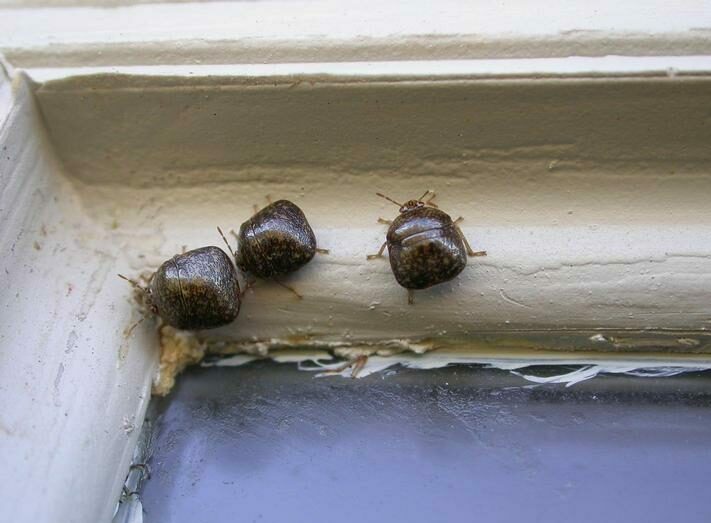
Credit: kudzubug.org
Kudzu Bugs (Megacopta cribraria) are invasive pests that seem to favor soybean crops. They’re more common in Georgie, but traveling to Mississippi wasn’t a major challenge for them.
They’re about 4 to 6 mm long, olive green with brown spots, and have an oblong shape. Kudzu bugs reproduce quickly, adding several branches to their family tree in a single season.
While they’re most commonly found around crops in the spring, they’re known to seek the warmth of homes for overwintering. If you’re lucky, they’ll stick to hiding under rocks or leaf litter instead of moving under your siding and into your home.
It can be difficult to handle a Kudzu Bug infestation because they prefer high up areas and still move around in the fall when many treat. Look for pesticides containing pyrethroid ingredients or reach out to a professional.
7. Webworms
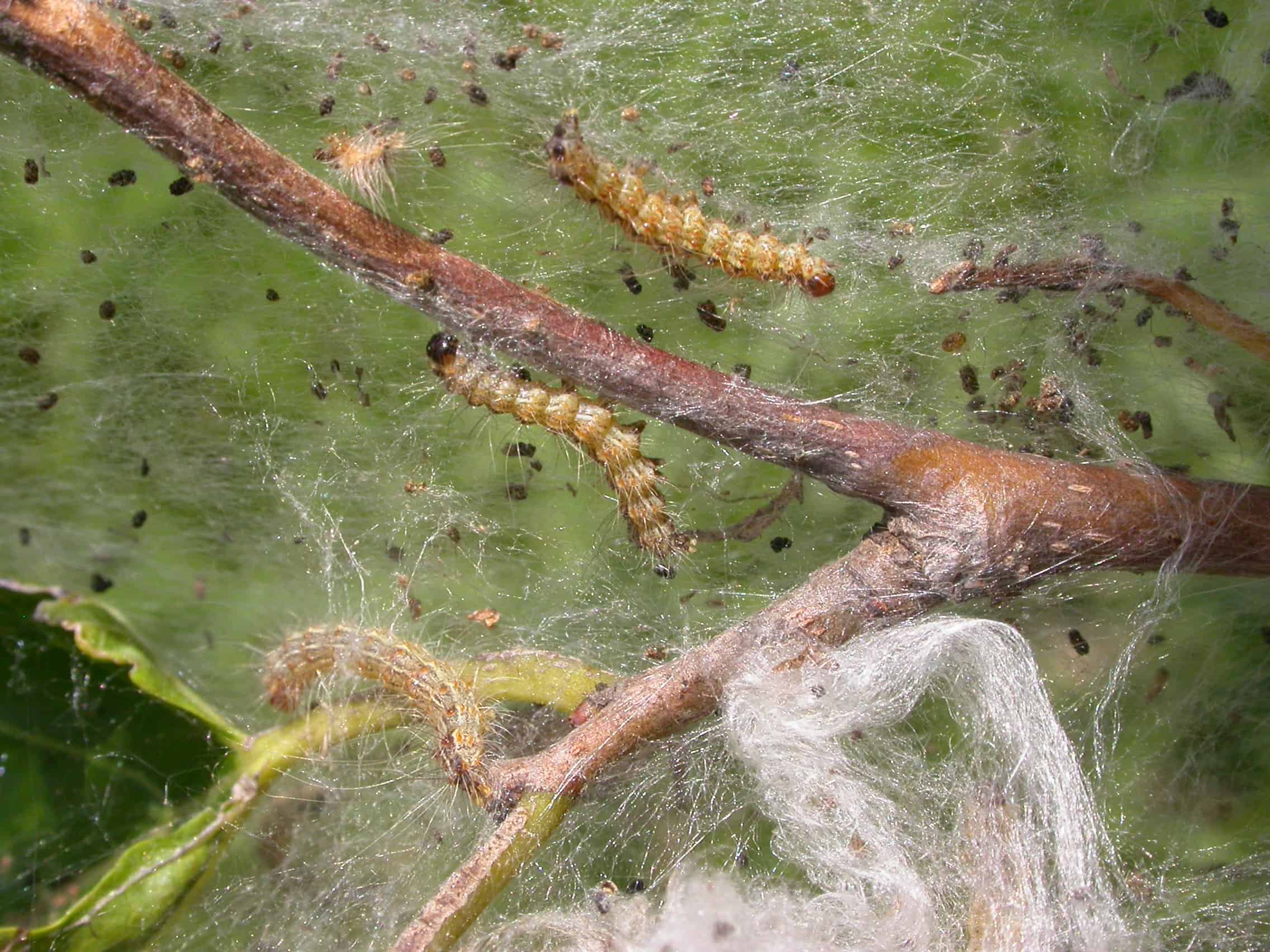
Credit: extension.entm.purdue.edu
The Fall Webworm (Hyphantria cunea) is a North American native found in Mississippi. The caterpillars build massive webs on the outer branches of trees as they chow through the greenery, putting in the work from late summer to early fall and earning them their name.
They’re more common in areas where trees grow with plenty of open space surrounding them, so you might find them in your yard at some point. After a summer of eating they enter their period of transitioning, emerging in the early summer as white moths eager to mate.
While they don’t bite, they’re a bit of an eyesore and a pain to deal with. The webs aren’t significant enough to damage the tree, and many are already losing their leaves once the webworms move in, so you only need to remove them if they’re cramping your style.
8. Bed Bugs
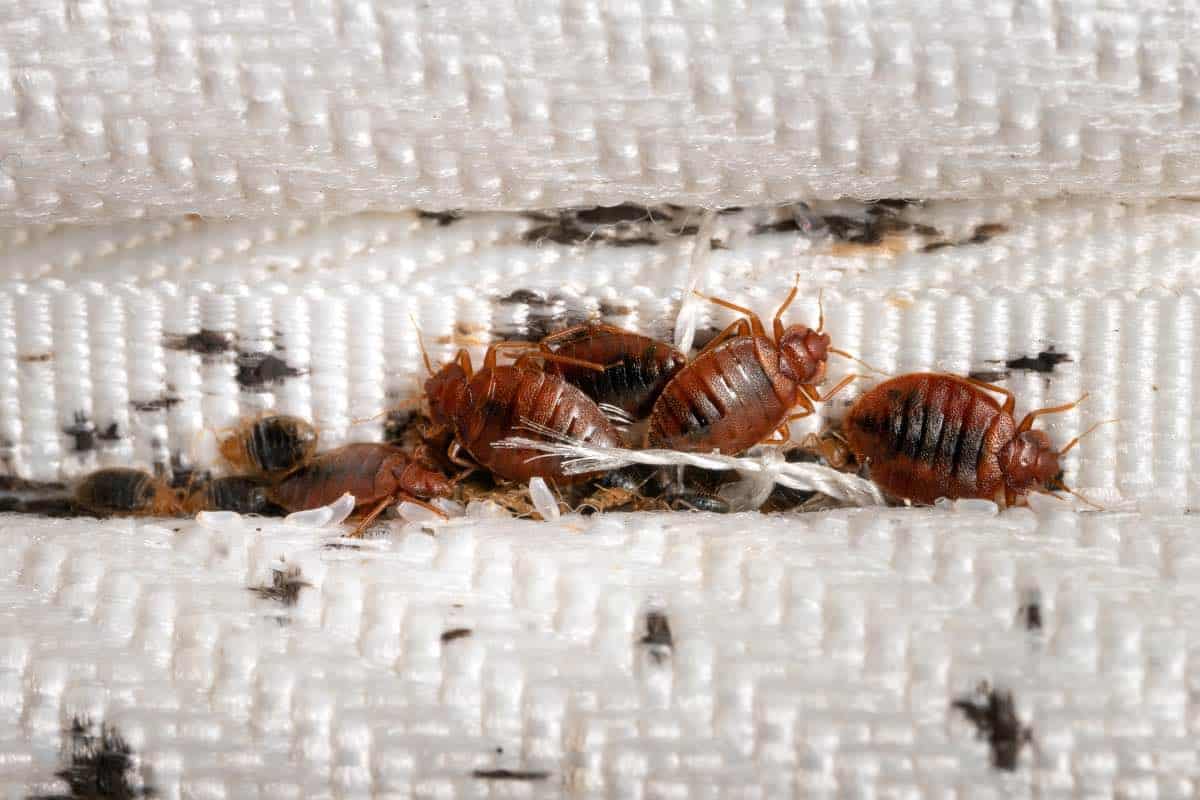
Credit: planetnatural
Bed bugs (Cimex lectularius) are an issue in most states, and Mississippi is no exception. They spread quickly, can go months without food, and prove incredibly resistant to most pesticides, making them difficult to deal with.
There are a few indicators that you’re dealing with bed bugs and not another biting pest, like fleas.
Their feeding instinct is set off by carbon dioxide, and they’re most likely to settle in for a snack while you’re asleep. If you’re waking up with itchy bites, especially if they appear in a triangular pattern.
Visible signs of bed bugs include black dots around the seams of your mattresses, box springs, and other furniture. They don’t usually show themselves until your home is well infested, and they will have a small, flat, seed-like shape and come in colors ranging from tan to dark red.
It’s best to deal with a bed bug infestation as soon as you notice them by contacting a professional for high-heat treatment or fumigation.
Conclusion
The most common pests in Mississippi are more of a nuisance than a major threat, and some are actually beneficial if you’re keen on letting them hang around. Otherwise, you can handle most populations with some careful attention and proper prevention.
If you find yourself with a serious infestation, do not hesitate to contact professional pest control services in your area. They can talk you through exactly what needs to be done to get rid of the bugs and how you can prevent them from moving back in.
Keep in mind that this is not an extensive list, and Mississippi homes may also see many other common bugs, like ticks, beetles, ants, gnats, mosquitoes, wasps, bees, and more. If you don’t see your pest on this list, comment below and we’ll help you figure it out.
